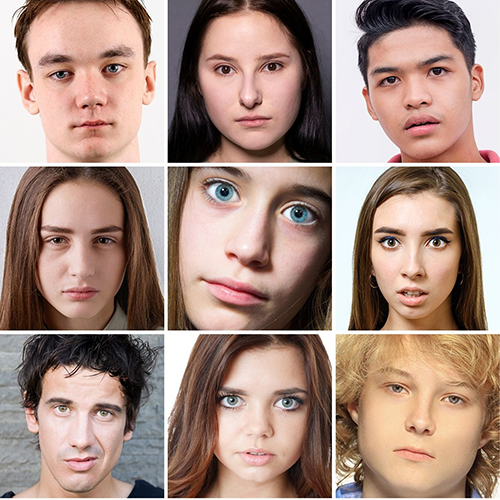25 November 2025
 It’s the look that’s launched a thousand TikToks – a blank, unreadable stare that’s sure to surface across this summer’s Christmas-casual workforce. But behind the meme, experts at the University of South Australia say the so-called Gen Z stare is less about attitude and more about how young people are navigating today’s social expectations.
It’s the look that’s launched a thousand TikToks – a blank, unreadable stare that’s sure to surface across this summer’s Christmas-casual workforce. But behind the meme, experts at the University of South Australia say the so-called Gen Z stare is less about attitude and more about how young people are navigating today’s social expectations.
Born between 1997 and 2012, Gen Z are the most filmed, most online, and most scrutinised generation. They’ve grown up with the internet, smartphones and social media, with younger Gen Zs experiencing COVID-19 lockdowns during some of their most critical social-development years.
Now, as the school term comes to a close, UniSA educator Alexandra Gavrilidis is asking people to recalibrate their expectations when it comes to Gen Z, calling for empathy rather than judgment.
“Every generation has its quirks, shaped by the events and technologies of their formative years,” Gavrilidis says. “Naturally, this creates a mix of different views, values and ways of interacting.
“For younger Gen Zs (those aged between 13-18 years) the ‘Gen Z stare’ is an identifiable behaviour that some older customers, teachers or colleagues can find offensive, rude or even unprofessional.
“But for Gen Z themselves, it’s usually more about the mundane: zoning out, processing, feeling awkward, or simply not seeing the point in forced small talk.
“It’s also a response to an unreasonable or frustrated customer, where Gen Z feel that maintaining a neutral, silent expression is the safest approach: essentially applying the principle of ‘if you don’t have anything nice to say, don’t say anything at all.’
“Gen Zs are not interested in fake friendliness or enthusiasm. They don’t feel obliged to respond if they don’t see a need, and they communicate in ways shaped by technology – where replies are optional, and delays are normal.
“COVID amplified these tendencies by removing opportunities to practise social skills, masking facial cues, increasing passive screen time and shifting expectations around friendliness and interaction.
“For many young people, the stare isn’t defiance at all, so, it’s important to take a moment to reflect before you react by impulse.”
During the holiday season, Gavrilidis says we’re all likely be confronted by questionable shopping or service behaviours – and not necessarily from Gen Zs. She says the answer isn’t to criticise, but to recalibrate.
“People fundamentally judge other people’s mistakes differently to how they judge their own, and this bias causes us to misjudge and misunderstand others,” Gavrilidis says.
“But if we choose to assume that others are doing the best they can, and that people are generally well-meaning, we can avoid unnecessary conflict and confrontation.
“Older generations can benefit by recognising that the ‘Gen Z stare’ is often unintentional rather than hostile. And Gen Z can try to understand how their non-verbal cues land, especially in customer-facing roles.
“While the Gen Z stare might be unavoidable – especially at Christmas – the conflict doesn’t have to be. A little curiosity, a little generosity, and a willingness to assume the best could turn that blank look into a far better day for everyone.”
…………………………………………………………………………………………………………………………
Contact for interview: Alexandra Gavrilidis E: alexandra.gavrilidis@unisa.edu.au
Media contact: Annabel Mansfield M: +61 479 182 489 E: Annabel.Mansfield@unisa.edu.au



